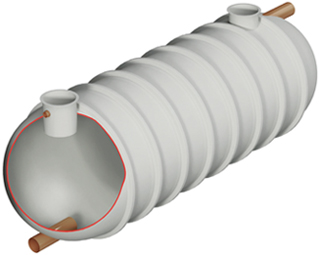If your plumbing is an old system, or has recently been repaired or rebuilt, then it is probably a good idea to complete a hydrostatic test. This process ensures that your system is structurally safe and can resist the amount of pressure it is designed for.

What is hydrostatic testing?
Hydrostatic testing is a way to test strength and check for leaks in pressure piping like plumbing, boilers, pipelines, fuel tanks or gas cylinders. This inspection process is carried out with a hydrostatic tester, which measures the rate of expansion in the equipment under pressure. The purpose of the test is to make sure the equipment can withstand the pressure it claims to. It ensures the mechanical integrity of the system.
How does hydrostatic testing work?
The process of hydrostatic testing involves filling up the vessel with liquid, removing the air, and then pressurising it. An inspector then examines the vessel, looking for leaks and checking if the shape of the vessel has changed. Oil or water is used to test equipment because these liquids cannot expand very much, which means if the test fails the technician will not be in danger. The test is carried out with pressure 1.5 times higher than the level the system is designed to resist. This ensures that the customer is safer, because if the pressure of the vessel goes over what it is rated for, it won’t break and injure them.
Why is hydrostatic testing important?
It is imperative for your equipment to meet DOT Pipeline and Hazardous Materials Safety Administration specifications otherwise you could be penalised if something goes wrong. Piping must be checked every three, five or ten years, depending on the age of the equipment, the amount of gas inside it, the material and the rating.
Testing is essential for equipment which has recently been repaired or rebuilt before it is returned to operation. If it is not checked then the equipment could fail, leak, or even explode under pressures it cannot manage. This would cause serious injuries to anyone involved, as well as being very costly. An example of this sort of dangerous circumstance would be a fire extinguisher which has slowly deteriorated over time and the structural integrity of the canister has been compromised, as it could burst in the crucial moment when it is needed. This is why hydrostatic testing is imperative to maintain the safety and quality of products.
Why must a professional complete hydrostatic testing?
- A leak in the equipment would let out high pressure liquid which can penetrate or cut into the skin.
- The fluid inside could be toxic or contaminated.
- Pressurised hoses which aren’t secured properly can whip around, spraying hazardous liquid and also potentially hitting someone.
- It is difficult to handle the components which are being tested without proper protective equipment.
Here at Wildon UK, we are expert wastewater engineers, and with 20 years of industry experience we are the company to trust with your hydrostatic testing. We specialise in sewage treatment pumps, pumping stations and plants, and operate in Stoke-on-Trent, Staffordshire, and all across the UK. If you would like to find out more about our services, contact us today.
Go back to








